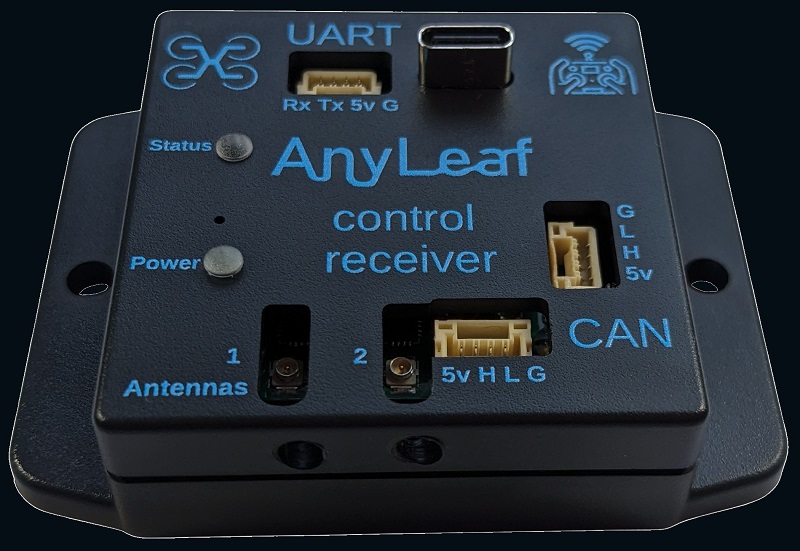
CAN ExpressLRS Receiver
Dual-radio 2.4Ghz control with link stats
Long range, reliable connection
The first CAN control receiver
Plug and play with ArduPilot
This device leverages the robust capabilities of ExpressLRS (ELRS) and
DroneCAN. Reliable connections over-the-air,
and within your aircraft.
Plug and play with ArduPilot. PX4 support coming soon.
Easy setup; uses standard DroneCAN messages for compatibility with the most popular flight controllers.
CAN-FD ready
Supports up to 64-byte frames, and 5Mbps data rates. It's also compatible with classic CAN systems.
CAN allows for simplified wiring, and robust, interference-resistant connections.
Encryption available
If you're interested in receiving encrypted control channel and/or telemetry data, send us an email.
This can be accomplished with a firmware update to this device's CAN MCU. Note that you will need a suitable
setup on the transmitter side as well.
Send arbitrary control data and telemetry with ELRS Airport
Full support for ExpressLRS Airport.
This allows you to send arbitrary data (including control data and telemetry) between the vehicle
and ground station. This is the first telemetry-over-CAN system available.
The bare PCB is easy to remove and mount; this is useful for compact builds.
Easy configuration
Data broadcast rate and number of channels are customizable, using the AnyLeaf Preflight software that connects with USB,
or through DroneCAN's parameter standard. Preflight is lightweight and easy to use: Download, launch, and plug the device
into your PC's USB port.

Our firmware and preflight software are written in Rust, for maximum reliability.
Perfect for commercial and university projects
- Connect the device to your CAN system using the 4-pin DroneCAN connector.
- If your flight controller is already configured for CAN, you're done
- If your flight controller isn't yet configured, open Mission Planner, and adjust this setting
under Config, Full Parameter List:
It can be configured using Mission Planner's CAN interface:

Sends the following DroneCAN messages
- RC control input
- Link statistics
- Node status and info
Specifications:
- Module dimensions: 49 × 49 × 17 mm. 70mm width with tabs
- Mounting holes: 2 × M4, spaced 60.4mm
- Weight: 28 grams
- Power: 5V, via CAN or USB-C
- Operating frequency: 2.4Ghz
- MCU: STM32G431. 170Mhz Cortex-M4
- Radio MCU: ESP32-PICO-V3
- Radio receiver: 2 × Semtech SX1280, with DC-DC power
- Low-noise Amplifier / Power Amplifiers: : 2 × SkyWorks RFX2401C
- Power Amplifier amplification: +22 dBm
- Radio timing source: 52Mhz temperature-compensated crystal oscillator (TCXO)
- Node update capabilities: USB-C, CAN
- Radio update capabilities: WiFi, UART
- Bus compatibility: DroneCAN
- CAN transceiver: NXP TJA1051TK/3
- CAN bitrate: Configurable up to 5Mhz
- CAN frame size: 8 or 64-byte
- CAN connections: 2 × JST GH, 1.25mm pitch
- UART connections: JST GH, 1.25mm pitch




